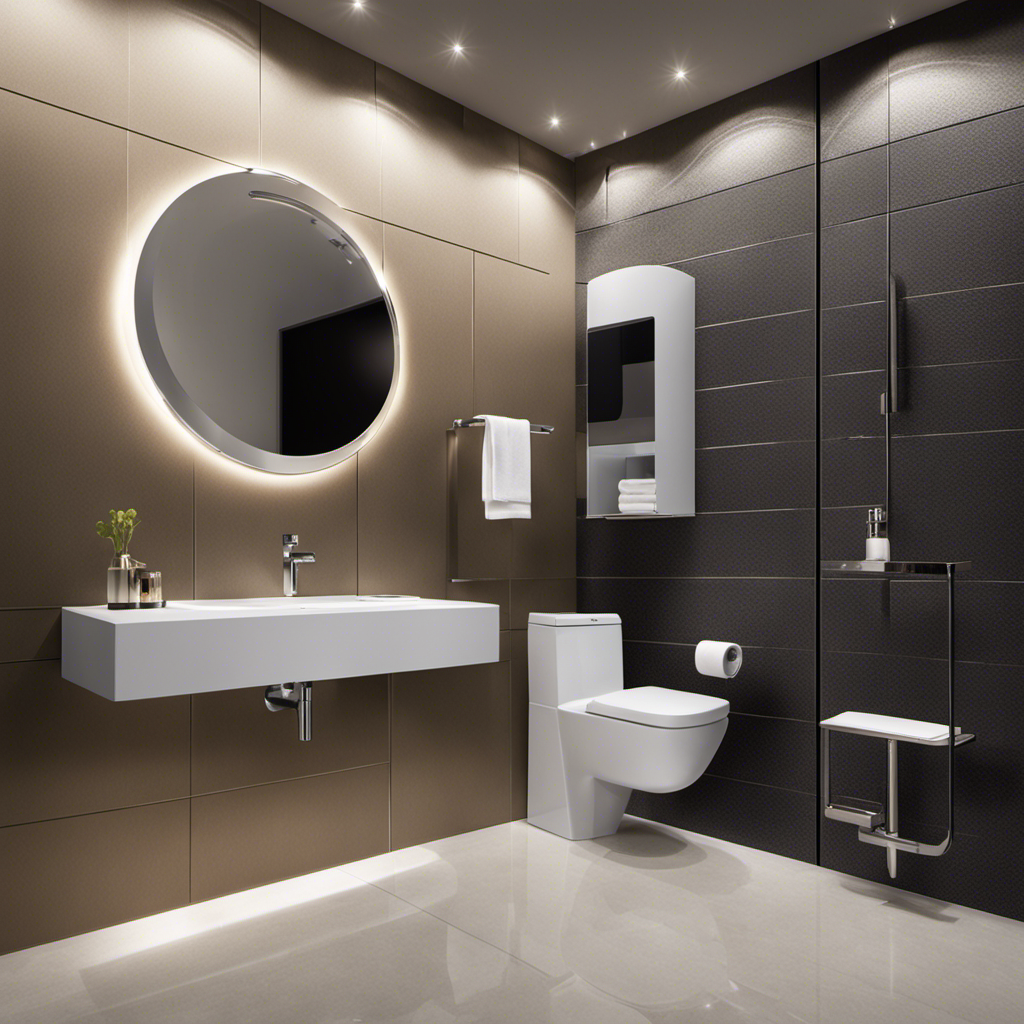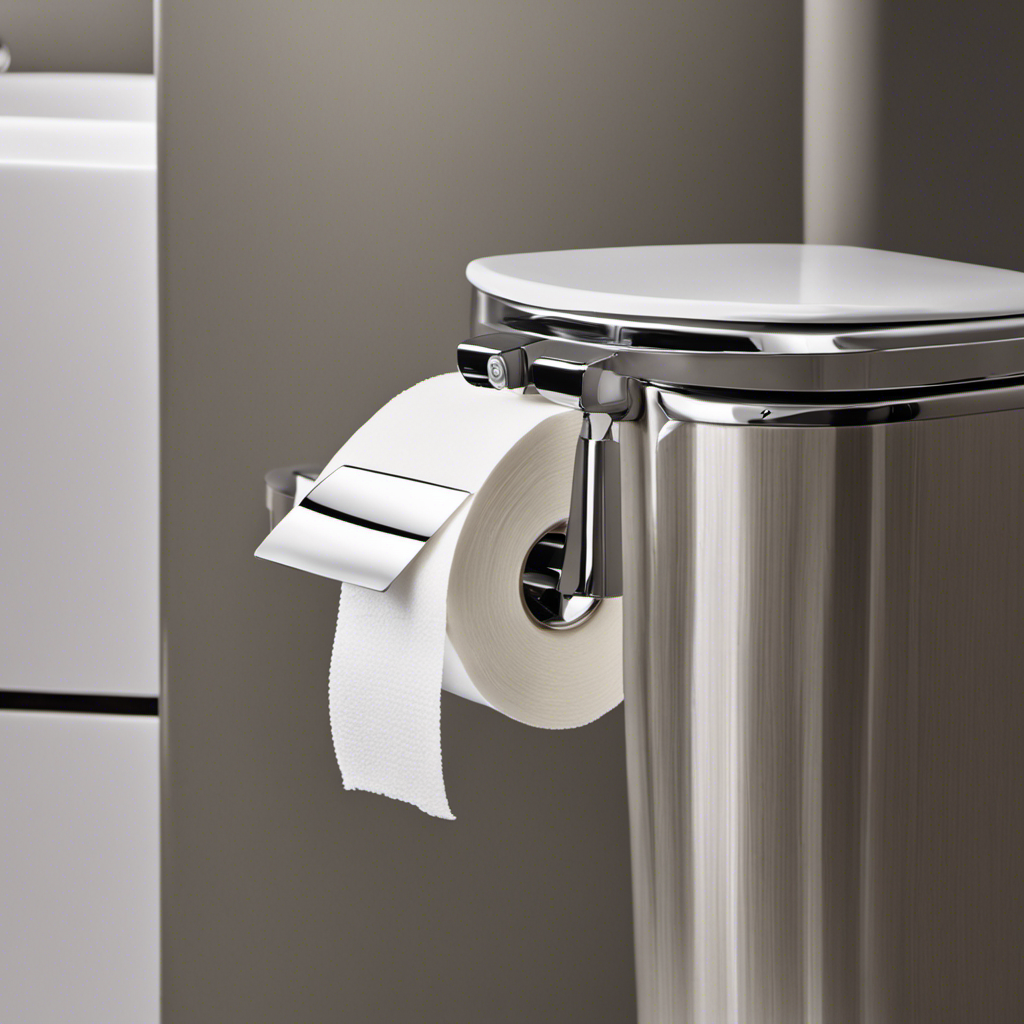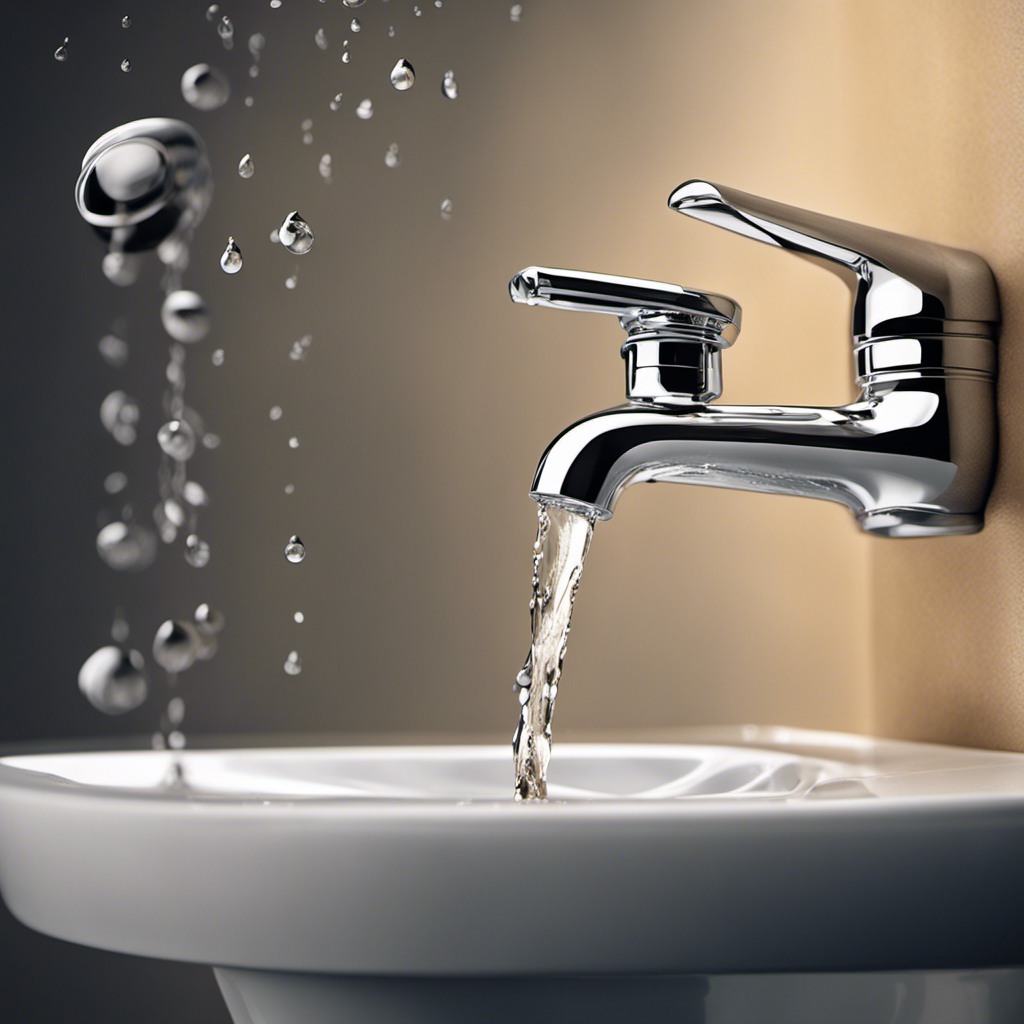I’ve had my fair share of toilet troubles, but nothing is more frustrating than a running toilet. It’s like a never-ending waterfall, wasting water and driving up your utility bills.
But fear not, because I’ve got the ultimate solution: fixing it with a ball float. In this article, I’ll guide you through the step-by-step process of diagnosing, adjusting, and even replacing a faulty ball float.
Get ready to say goodbye to that annoying running toilet once and for all!
Key Takeaways
- The ball float regulates the water level in the toilet tank and is made of plastic or brass.
- Diagnosing a running toilet involves checking the water level, fill valve, and flapper.
- Shutting off the water supply is crucial and valve maintenance is essential for a well-functioning toilet.
- Prevent water damage by ensuring proper valve function, detecting water leaks, and promptly fixing any leaks.
Understanding the Role of the Ball Float
To fix your running toilet, you need to understand the role of the ball float.
The ball float is a crucial component that regulates the water level in the toilet tank. It is usually made of either plastic or brass, both of which are durable and resistant to corrosion.
Plastic ball floats are more common and affordable, while brass ball floats are more expensive but offer better longevity.
There are also different types of ball floats available in the market, including the standard ball float, cone float, and diaphragm float. Each type has its own unique design and functionality, but they all work to control the water level by rising and falling with the water pressure.
Understanding the materials and types of ball floats will help you troubleshoot and fix any issues with your running toilet effectively.
Diagnosing a Running Toilet
You can easily determine why your toilet keeps overflowing by checking the water level in the tank. If the water level is too high, it may be due to a faulty fill valve or a flapper that isn’t sealing properly.
To diagnose the issue, first, remove the tank lid and observe the water level. If it’s above the overflow tube, the fill valve is likely the culprit. Adjust the float or replace the fill valve if necessary.
If the water level is below the overflow tube, the flapper may be the problem. Inspect the flapper for any signs of wear or damage and replace it if needed.
Regular toilet maintenance, such as checking the water level, can prevent future issues and ensure proper toilet function.
Shutting Off the Water Supply
When it comes to shutting off the water supply, knowing the location and function of the valve is crucial. The valve is typically located near the water meter or in the basement of a house.
It is important to be aware of this information as it allows for quick and efficient action in case of emergencies, such as potential water damage.
Valve Location and Function
The valve controls the flow of water into the toilet tank. It is an essential component of the toilet’s flushing mechanism. Proper valve maintenance and repair are crucial in ensuring a well-functioning toilet.
Here are some key points about valve maintenance and repair:
-
Regular inspection: Check the valve for any signs of wear or damage.
-
Cleaning: Remove any debris or mineral deposits that may hinder the valve’s operation.
-
Lubrication: Apply a small amount of plumbers’ grease to ensure smooth movement of the valve.
-
Replacement: If the valve is faulty or damaged beyond repair, it may need to be replaced.
-
Professional help: If you are unsure about valve maintenance or repair, it is best to seek the assistance of a professional plumber.
Potential Water Damage
To prevent potential water damage, ensure that the valve is functioning properly and promptly address any signs of wear or damage.
Water leak detection is crucial in preventing water damage caused by a running toilet. Even a small leak can result in significant water wastage and damage to your home.
Signs of a water leak include a continuously running toilet, water pooling around the base, or a noticeable increase in your water bill. If you notice any of these signs, it is essential to investigate and fix the issue promptly.
Neglecting to address a water leak can lead to costly repairs and potential damage to your flooring and walls.
Now, let’s move on to adjusting the ball float to fix the running toilet.
Adjusting the Ball Float
When it comes to adjusting the ball float in a toilet, there are several key points to keep in mind.
First and foremost is the proper float height, which ensures the correct functioning of the toilet.
Adjusting the water level is another important consideration, as it can affect the flush power and overall performance.
Lastly, troubleshooting common issues such as leaks or inconsistent filling can help identify and resolve any problems with the ball float.
Proper Float Height
Adjust the float height so that it is level with the water line in the toilet tank. This is crucial for proper float adjustment and to avoid common float problems.
Here are some key points to keep in mind:
-
Check the water level: Ensure that the water level in the tank is at the appropriate level, usually marked on the inside of the tank.
-
Turn off the water supply: Before making any adjustments, locate the shut-off valve behind or near the toilet and turn it off to prevent water flow.
-
Adjust the float arm: Depending on the type of ball float, you may need to adjust the float arm by bending it slightly to achieve the desired height.
-
Test and adjust: After making adjustments, turn on the water supply and observe if the water stops at the correct level. If not, repeat the process until the desired level is achieved.
-
Regular maintenance: Periodically check the float height and adjust as needed to ensure the toilet functions properly and efficiently.
Adjusting Water Level
Ensure that the water level in your toilet tank is at the appropriate level, as this is crucial for proper float adjustment and to avoid common float problems. To adjust the water level, you need to locate the fill valve in your toilet tank. The fill valve is responsible for regulating the water level in the tank. By adjusting the fill valve, you can control the water pressure and ensure that the tank fills up to the right level. Here is a step-by-step guide to adjusting the water level in your toilet tank:
| Step | Instructions |
|---|---|
| 1 | Turn off the water supply to the toilet. |
| 2 | Flush the toilet to drain the tank. |
| 3 | Locate the fill valve and adjust the water level by turning the adjustment screw or knob. |
| 4 | Turn the water supply back on and let the tank fill up. |
| 5 | Check the water level and make any necessary adjustments until it reaches the appropriate level. |
Troubleshooting Common Issues
To troubleshoot common issues with your toilet, start by checking the water level in the tank. If the water level is too low, it may cause weak flushing or incomplete emptying of the bowl. Conversely, if the water level is too high, it could lead to constant running or overflowing.
Here are some troubleshooting techniques and common solutions to consider:
- Inspect the ball float: Ensure that it is properly attached and not sticking.
- Check the flapper valve: Make sure it is sealing properly and not worn out.
- Examine the fill valve: Verify that it is not blocked or malfunctioning.
- Inspect the flush handle: Ensure it is not loose or broken.
- Look for leaks: Check for any water seepage around the base or at the connections.
Replacing a Faulty Ball Float
If the ball float in your toilet is faulty, you’ll need to replace it. A faulty ball float can cause various issues with your toilet, such as constant running or not flushing properly.
To troubleshoot and fix the problem, start by turning off the water supply to the toilet. Flush the toilet to drain the water from the tank.
Next, remove the old ball float by unscrewing it from the valve assembly. Take note of the size and type of ball float you need to purchase as a replacement.
Install the new ball float by screwing it onto the valve assembly. Turn the water supply back on and test the toilet to ensure it is working properly.
This simple repair will help resolve any leaking or flushing problems you may be experiencing with your toilet.
Cleaning and Maintaining the Ball Float
Regularly cleaning and maintaining the ball float in your toilet is essential for preventing any potential issues. Here are some cleaning techniques and troubleshooting tips to keep your ball float in optimal condition:
- Use a mild cleaning solution, such as vinegar and water, to remove any mineral deposits or debris that may be affecting the ball float’s performance.
- Gently scrub the ball float with a soft brush or sponge to ensure thorough cleaning without causing any damage.
Check for any signs of wear or damage, such as cracks or leaks, and replace the ball float if necessary.
- Adjust the ball float’s position to ensure it is properly aligned with the water level in the tank.
- Test the ball float’s functionality by flushing the toilet and observing if it shuts off the water flow completely.
Troubleshooting Common Issues With a Ball Float
When troubleshooting common issues with a ball float, it’s important to check for any signs of wear or damage. If the ball float is cracked or worn out, it may not be able to properly control the water level in the toilet tank. In this case, replacing the ball float may be necessary.
To do this, first turn off the water supply to the toilet and flush to empty the tank. Next, disconnect the float arm from the fill valve and remove the old ball float. Install the new ball float by attaching it to the float arm and reattach the arm to the fill valve. Finally, turn on the water supply and test the toilet to ensure proper functioning.
If the ball float is not damaged but still not working correctly, repairing it by adjusting the float arm or cleaning any debris may solve the issue.
Frequently Asked Questions
Can I Use Any Type of Ball Float to Fix a Running Toilet?
Yes, you can use different types of ball floats to fix a running toilet. The first step to replace a faulty ball float is turning off the water supply, then removing the old float and installing the new one.
How Often Should I Clean and Maintain the Ball Float?
Regular maintenance of the ball float is crucial to ensure proper functioning of the toilet. It is important to know how to clean the ball float properly to prevent issues and keep the toilet running smoothly.
What Are Some Common Issues That Can Occur With a Ball Float?
Common issues with a ball float include leaks, sticking, and improper water levels. Troubleshooting tips involve checking for cracks, adjusting the float arm, and cleaning the valve seat.
Can I Adjust the Ball Float While the Water Supply Is Still On?
No, it is not recommended to adjust the ball float while the water supply is still on. This can cause water to overflow or result in damage to the toilet. It is best to turn off the water supply before troubleshooting the ball float.
How Do I Know if My Ball Float Is Faulty and Needs to Be Replaced?
If my ball float is faulty and needs replacing, there are a few signs to look for. If the toilet constantly runs, the water level is too high or too low, or the float is damaged, it’s time to replace it.
Conclusion
In conclusion, fixing a running toilet with a ball float is a straightforward task that can be easily accomplished with a few simple steps.
By understanding the role of the ball float and diagnosing the issue, you can quickly shut off the water supply and make the necessary adjustments or replacements.
Remember to clean and maintain the ball float regularly to prevent future problems.
Just like a conductor guiding an orchestra, the ball float orchestrates the smooth functioning of your toilet, ensuring a harmonious bathroom experience.










